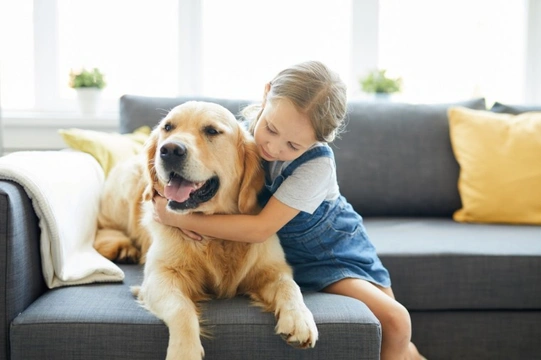
Five tips and ideas for people with dogs and children during coronavirus stay at home restrictions
If you’ve suddenly gone from working outside of the home to home working or not working at all and being at home all day with your children off school too in the wake of Covid 19 coronavirus stay at home restrictions, you’re probably near the bottom of a very steep learning curve that is apt to test your patience and parenting skills alike to the limit over the coming weeks.
This is naturally hugely daunting and stressful for many of us, and coming up with ideas to keep the kids entertained whilst also safeguarding our own mental health is far from easy, and however badly you feel that you’re coping so far, you’re doing your best and that is all that can be expected.
If you own a dog too, this might be one more source of stress as you can’t walk and exercise them as normal, might be limited in terms of when and how you can walk them due to caring for your children and keeping within the remit of the restrictions, or find that your kids are breaking the rules and sabotaging your efforts with the dog by feeding them sweets and encouraging bad behaviour.
Before you lose your mind, check out this article first for five tips and ideas for parents who have both children at home and a dog, and how to keep them all occupied and manage things to make your life easier during the coronavirus stay at home restrictions.
Go on rainbow-spotting dog walks
Dogs are highly social creatures; but so are children, and it is very hard for many children to be isolated from their friends with only siblings (if any) for company around their own age for company whilst everyone is mandated to stay at home.
Many children up and down the country are taking part in an unofficial coronavirus-related remote activity, by drawing or making rainbows and displaying them in their homes and windows, as a way to connect with others.
Children (and adults!) can turn spotting them and counting them into a game during their daily period of outdoor activity.
Take the dog along too, and take part in a rainbow-spotting walk, and vary your route each time you think you’ve found all of them.
Set up a treasure hunt in your home or garden
Keeping your kids active with only one activity a day outside of the home can be a challenge, and the same is true for dogs. This means you have to get creative about what can be achieved indoors and in your own garden, and a scavenger hunt or treasure hunt around your home with clues and small treats or activities at each stop-off is something that can keep your kids busy for a while.
Add in some treats for the dog to sniff out too and encourage the children to actively involve the dog – or follow its nose – and you might find that whilst your family won’t exactly be silent, they won’t be clamouring for attention for a while either!
Teach your children about dog training and care
Being at home with your dogs and kids and all at a lose end can be can opportunity in many ways, and one way to use it is to begin to teach your child about dogs, their care, training, and how they behave and think.
You might well learn something along the way yourself here too, so arm yourself with some useful advice from a reputable source (check out some of the numerous other articles here on Pets4Homes, for instance) and tailor your learning sessions to your children’s ages and level of understanding.
Then, get them involved in your dog’s day to day care, perhaps drawing up a rota of what needs to be done and when, with stars or awards to win for completing a set.
Use the dog and the children to wear each other out
Children and dogs that are full of beans and energy can be exhausting for their parents, but if you’re savvy, you can set the two parties to cancel each other out! Set up a game of fetch, chase, or something else fun and high-energy that involves both the dog and the children, and help both to work off some of their excess energy.
Talk to your children about the impact the restrictions have on your dog and why it is important to minimise them
It is important to talk to your children about coronavirus and its impact and limitations, and not just to keep them in the dark. This is a frightening time for both kids and adults, and children need to have things explained to them in the right way for their age and personality, to help to make things easier for them and so that they understand what is going on as far as they are able.
Talking to them about the dog and how they fit into all of this, and the impact it has on them is something you should factor in as well. For instance, explain how the dog might not be able to get as much exercise as normal and how the children can help; and why keeping to the dog’s normal rules and routine is important, and why feeding them sweets or bothering them when the child is bored is not ok.
This can help to make our home a bit calmer and avoid potential problems, as well as ensuring that your children support your efforts to care for your dog (and them) during this time.



